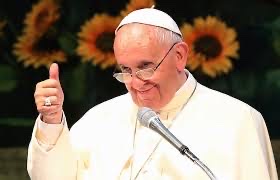The Mass - Meal and Sacrifice - The Beginning - The Eucharist as a Meal - Part 2
PART 2 - THE BEGINNING - THE EUCHARIST AS A MEAL
Anyone who attends the Eucharistic celebration, whether he be a believer or not, immediately realizes that it is a meal. This reminds us of the importance that Christ attached to meals during his mortal life; how He made them one of the greatest signs of His identification with the condition of men; how He gave important teachings in connection with meals, and how most of His apparitions after His resurrection were begun or concluded with a meal.
The evening before He died (the day before the feast of Passover), Jesus shared His last fellowship meal with his disciples. During the last supper, however, Jesus departed from the ritual in a few ways that Christians would long remember. He took the basin of water kept for the hand washings and washed His disciples’ feet as a sign that they should serve each other. When he broke the bread and gave it to his friends, he indicated that it was His body that he was giving to them. And when he said the blessing over the cup of wine, he said that it was the cup of a new covenant that they were sharing that night. Such were the simple beginnings of the Eucharistic liturgy.
The earliest written record of the last supper of Jesus and the Lord’s supper of the early Christians is found in a letter which Paul sent to the community of Corinth around the year 57. Since the Eucharistic celebration finds its origin in the family meal, at its root it is a very friendly and interactive occasion. Such interaction and enthusiasm appears to have been commonplace during the early centuries of the Christian Era. However, this interaction and enthusiasm did have its problems and issues. St. Paul discusses serious abuses in 1 Corinthians 11:17-22. The Christians he is addressing used to combine the celebration of the Eucharist with a meal in common. In principle, this meal was intended to be a sign of charity and solidarity among those present. These meals also provided an opportunity to help those most in need. But, instead of a meal in which all shared equally, they had been eating in groups, each group eating the food that they had brought, which meant that some ate and drank too much, while others did not have enough or had nothing at all. The net effect was that this meal was in sharp contrast with the Eucharist, the source of charity and unity. Very early on the the Church the Eucharist was separated from these meals, which then became simple fraternal meals with no liturgical significance.
Early Christian documents describe Eucharistic gatherings in words that suggest a general structure similar to what we presently use. The community gathers, scripture is read, the readings are interpreted, and then intercessory prayers are offered. Then, bread and wine are brought to the table, a prayer of thanksgiving is offered to God through Christ in the Spirit, the bread is broken, and the broken bread and sacred cup are shared among those present. After this the community is dismissed and some of the holy food taken to the absent.
Between the fourth and sixth centuries Christian Eucharistic worship evolved from a comparatively brief and simple ritual meal into a richly elaborate ceremonial liturgy. In the year 313, Constantine lifted the legal ban on Christian worship and Christians became free to assemble in public. In 380, Theodosius proclaimed Christianity as the official religion of the Roman state. Eucharistic worship thus became a state function as well as a religious ritual.
So, we now have the concept of the Eucharist as a “meal” shifting from just a meal to something more, a ritual with spiritual significance.
END OF PART 2


Comments
Post a Comment